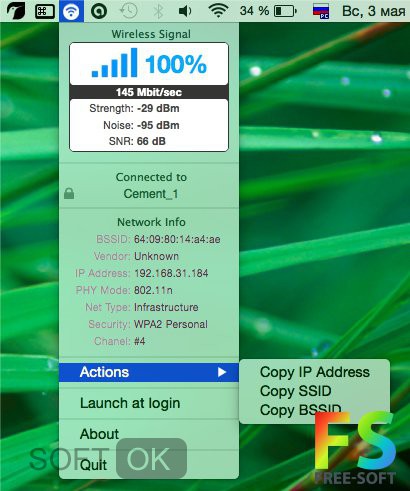Wireless Signal 2 0
Planning
Many of the cordless telephones and baby monitors in the United States and Canada use the 2.4 GHz frequency, the same frequency at which Wi-Fi standards 802.11b, 802.11g and 802.11n operate. This can cause a significant decrease in speed, or sometimes the total blocking of the Wi-Fi signal when a conversation on the phone takes place. For the pool professional, iAquaLink 2.0 delivers the easiest installation ever and offers: Faster and easier installation with no need for laptops, cables, or software to download; Simple WiFi setup using any smartphone or tablet; Enhanced WiFi performance with strongest signal strength; Compatibility with virtually all routers. Additionally, if your WiFi signal has to pass through multiple walls or appliances, like refrigerators, televisions, and microwaves, its signal will be weakened. Using an ethernet connection can help to eliminate lag time between your computer and the signal sent from your router.
The key to any good wireless deployment is proper planning, which requires a set of goals and requirements to achieve. Determining minimum signal strength requirements in the coverage area is almost alway part of the network requirements list.
Requirements and Variables
AR Drone 2.0 better wifi signal mike h. Unsubscribe from mike h? My AR Drone 2.0 high power wifi setup - Duration: 1:58. Fairy Suryana 2,287 views. Oct 14, 2020 The Amped Wireless AC1750 Wi-Fi Range Extender (RE1750A) is a pricey dual-band range model that has lots of I/O ports and management options, and delivers solid 2.4GHz throughput. Pros Easy to install.
Desired signal strength for optimal performance varies based on many factors, such as background noise in the environment, the amount of clients on the network, what the desired data rates are, and what applications will be used. For example, a VoIP or VoWiFi system may require much better coverage than a barcode scanner system in a warehouse.
Understanding Signal Strength
WiFi signal strength is tricky. The most accurate way to express it is with milliwatts (mW), but you end up with tons of decimal places due to WiFi's super-low transmit power, making it difficult to read. For example, -40 dBm is 0.0001 mW, and the zeros just get more intense the more the signal strength drops.
RSSI (Received Signal Strength Indicator) is a common measurement, but most WiFi adapter vendors handle it differently, as it isn't standardized. Some adapters use a scale of 0-60, and others 0-255.
Ultimately, the easiest and most consistent way to express signal strength is with dBm, which stands for decibels relative to a milliwatt. Since RSSIis handled differently by most WiFi adapters, it's usually converted to dBm to make it consistent and human-readable.
- mW - milliwatts (1 mW = 0 dBm)
- RSSI - Received Signal Strength Indicator (usually 0-60 or 0-255)
- dBm - Decibels in relation to a milliwatt (usually -30 to -100)
Reading dBm
The first thing to understand about dBm is that we're working in negatives. -30 is a higher signal than -80, because -80 is a much lower number.
Next, it's important to know that dBm does not scale in a linear fashion like you'd expect, instead being logarithmic. That means that signal strength changes aren't smooth and gradual. The Rule of 3s and 10s highlights the logarithmic nature of dBm:
3 dB of loss = -3 dB = halves signal strength3 dB of gain = +3 dB = doubles signal strength
10 dB of loss = -10 dB = 10 times less signal strength (0.1 mW = -10 dBm, 0.01 mW = -20 dBm, etc.)
10 dB of gain = +10 dB = 10 times more signal strength (0.00001 mW = -50 dBm, 0.0001 mW = -40 dBm, etc.)

Wireless Signal 2 0 Ghz
Ideal Signal Strength
So what signal strength should you shoot for? For simple, low-throughput tasks like sending emails, browsing the web, or scanning barcodes, -70 dBm is a good signal strength. For higher-throughput applications like voice over IP or streaming video, -67 dBm is better, and some engineers recommend -65 dBm if you plan to support mobile devices like iPhones and Android tablets.
Note: The numbers in this chart are suggestions only. The desired signal strengths will vary, based on the requirements for the network.
| Signal Strength | TL;DR | Required for | |
|---|---|---|---|
| -30 dBm | Amazing | Max achievable signal strength. The client can only be a few feet from the AP to achieve this. Not typical or desirable in the real world. | N/A |
| -67 dBm | Very Good | Minimum signal strength for applications that require very reliable, timely delivery of data packets. | VoIP/VoWiFi, streaming video |
| -70 dBm | Okay | Minimum signal strength for reliable packet delivery. | Email, web |
| -80 dBm | Not Good | Minimum signal strength for basic connectivity. Packet delivery may be unreliable. | N/A |
| -90 dBm | Unusable | Approaching or drowning in the noise floor. Any functionality is highly unlikely. | N/A |
Tracking Signal Strength

Signal strength is easy to track with inSSIDer. Configure the signal strength threshold to whatever signal strength you require, select your network, and walk the desired coverage area.
Signal 2 Korean Drama
If the blue line falls below the dotted line, you know you have a dead spot. That's it!
Wireless Signal 2 0 3
Next Lesson...
Understanding RSSI